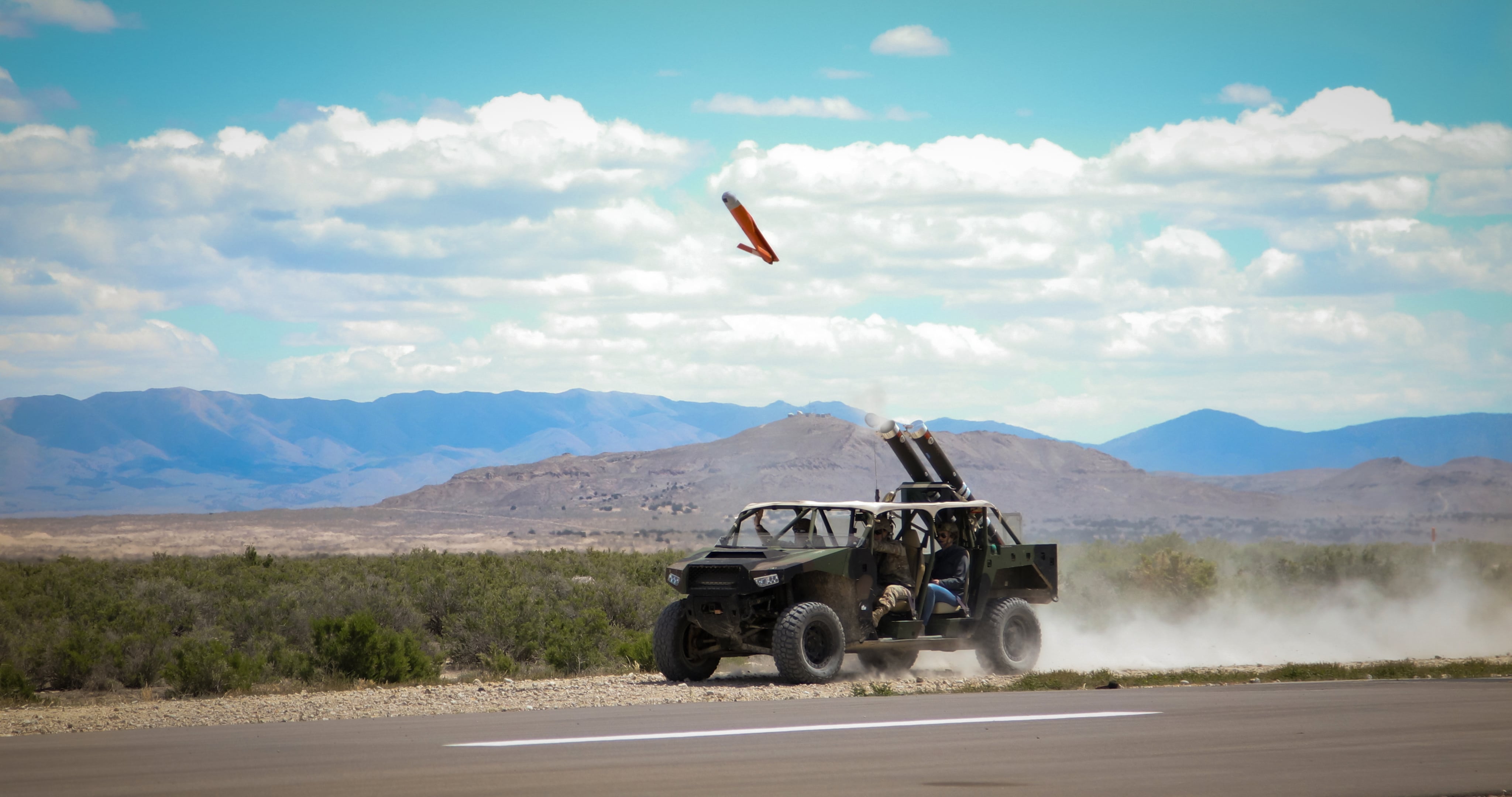WASHINGTON — Reaper- and Gray Eagle-maker General Atomics Aeronautical Systems unveiled on Dec. 9 its newest unmanned aircraft system — Mojave — capable of handling much greater payloads and taking off and landing using short, undeveloped surfaces.
Mojave essentially takes a Gray Eagle fuselage and adds enlarged wings with high-lift devices and a Rolls Royce 450-horsepower turboprop engine. The UAS is based on the avionics and flight control systems of the MQ-9 Reaper and the MQ-1C Gray Eagle-Extended Range, General Atomics representatives told reporters in a Dec. 8 briefing.
“This started back when we were thinking of how to be runway independent,” General Atomics Aeronautical Systems President David Alexander said during the briefing.
The services — in particular, the Army — have been looking at unmanned aircraft that are not runway dependent. The Army has embarked on replacing its smaller class Shadow UAS with a new tactical UAS that can take off and land vertically with no need for a runway.
“We looked at vertical takeoff-and-landing and, you know, the issues of being able to do that with a useful load this meaningful ... that can carry you a useful set of sensors or useful set of weapons, whatever, but having that useful load and doing vertical takeoff and landing, it’s just mission impossible,” Alexander said. “You’re just fighting physics and you end up with something that doesn’t persist.”
Mojave “takes advantage of the high-lift wing with leading edge slats and double-slotted flaps and extra horsepower to do the job and we think this is a very efficient way to get you persistence and get it somewhat runway independent, meaning it’s got flotation tires on it and an extra strong landing gear,” Alexander said.
The company tried a variety of ways to address the VTOL challenge, but to achieve a payload capacity even a Gray Eagle can’t accommodate now, it came up with a more expeditionary solution.
Mojave’s payload capacity is 3,600 lbs and it can carry up to 16 Hellfire missiles, for example. Other payload options are electro-optical/infrared, synthetic aperture radar/ground moving target indicator and signal intelligence.
“Our original idea was Armed Overwatch type missions and, you know, [intelligence, surveillance and reconnaissance] as well and so you could offload weapons and just do an ISR only and have much longer endurance as well, but it’s expeditionary, a dirt road would do with this,” Alexander said.
Now, the company envisions a role for Mojave in attack and armed reconnaissance missions as well.
Particularly addressing the way the Army envisions using the aerial tier in future fight, Mojave could be focused on a standoff mission, Alexander said, which is something the extended range Gray Eagle is already focused on. Gray Eagle is demonstrating this capability at events like Project Convergence and Edge 21.
RELATED

“How that would fit in is you would carry sensors that can have the basic to-the-horizon type of capability for range and you’re behind your friendly line of troops and you can provide the connection … to the whole battlefield and you can also launch small unmanned aircraft to penetrate in and do combat ID,” Alexander said. “It’s how we feel we fit in and [can be] affordable and persist, is really through that standoff mission, which the Army has embraced. … It just provides a different level of capability with a significant loadout over Gray Eagle today.”
Fuel capacity for the aircraft is 3,550 lbs. A four-person team can set up Mojave in about 90 minutes from roll out. It can fly eight hours in an ISR mission and three hours in an attack or armed reconnaissance mission with 12 Hellfire missiles, according to a GA fact sheet.
A prototype of Mojave flew over the summer and continues to fly through its mapped-out paces. Gradually, General Atomics has upped the ante from Mojave’s first flight, and, according to Alexander, “we’re deploying the leading edge slats, the flaps, checking out how slow we can approach and we’re touching down at 40-45 knots now. … [It] doesn’t even look like it should be flying it’s going so slow, so it’s very exciting.”
General Atomics is first eyeing opportunities with Special Forces and is still hoping its Armed Overwatch program will include an unmanned aircraft as part of the mix. “We haven’t given up on that. We’re still pushing it,” Alexander said. “I think it’s a mistake not to include an unmanned aspect to that program.”
The program aims to buy aircraft for close air support, precision strike and ISR missions.
Another option would be to turn to international customers. “The DoD right now is just kind of moving a little slow, but there’s also international interest going on,” Alexander said. “Is it six months away? I’m not sure that would be the case, but maybe within a year we could see a customer.”
Jen Judson is an award-winning journalist covering land warfare for Defense News. She has also worked for Politico and Inside Defense. She holds a Master of Science degree in journalism from Boston University and a Bachelor of Arts degree from Kenyon College.








